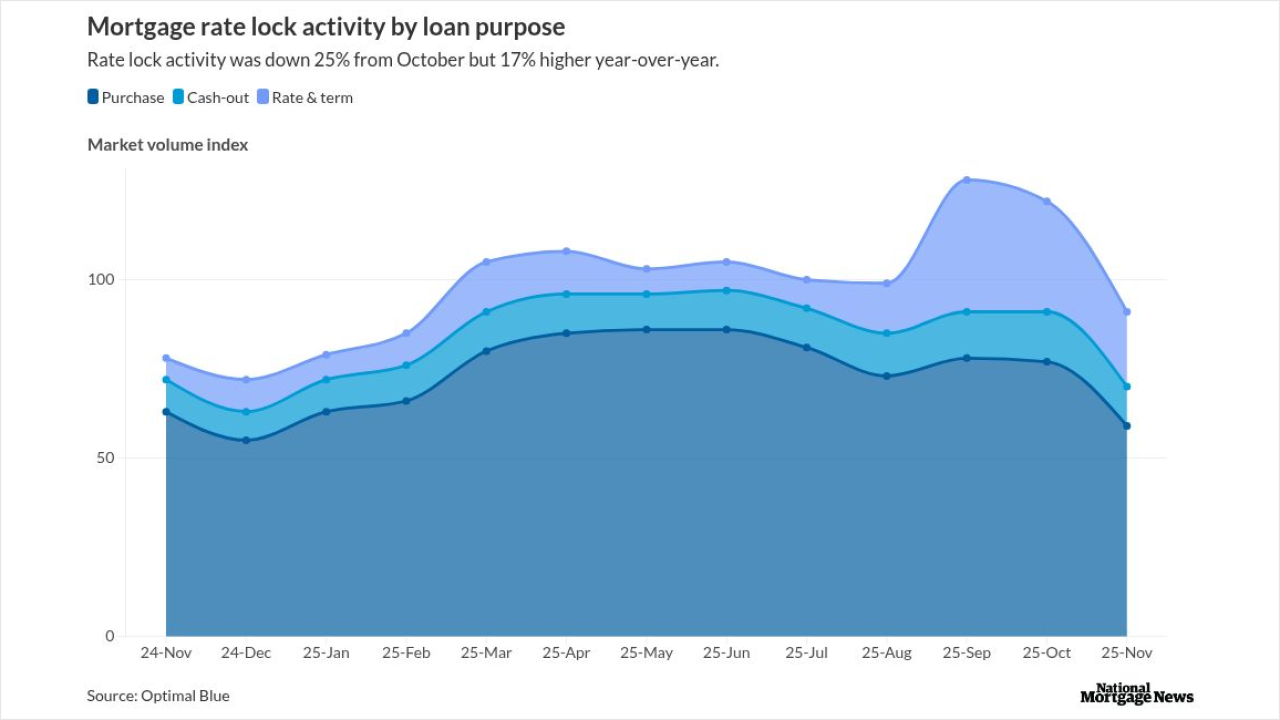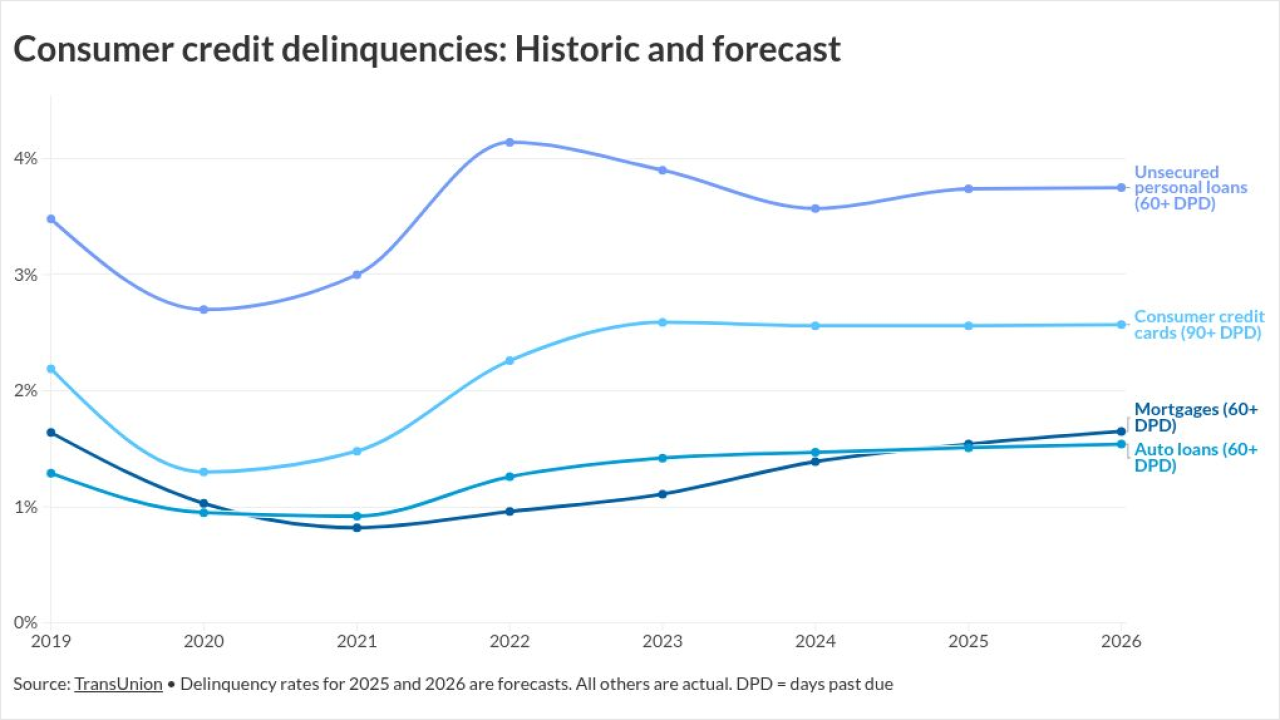Rate-lock volumes are often tied to the speed of prepayment activity and could be used to potentially determine values for mortgage-backed securities and servicing rights, according to analysts at Black Knight’s Optimal Blue.
In a new white paper, Optimal Blue researchers looked at rate-lock volumes from its product and pricing engine between July 2018 and December 2020 and compared it to

Other models have relied primarily on anticipated borrower behavior to forecast prepayment activity, whereas Optimal Blue connected it to transactions, adding another layer of information that could lead to more informed predictive risk analysis.
“In most cases, a rate lock will occur at roughly the same time as the application is submitted to the lender, reflecting a concrete decision on the part of a borrower to pursue funding,” said Scott Happ, Optimal Blue’s president, in a press release. “The timing of the lock makes it the most reliable, initially observed event in the mortgage process and a leading indicator of prepayments to the extent that a new mortgage, identified by the rate lock, will replace an existing loan.”
For mortgages up to $85,000, researchers determined a correlation of 86.7% between Optimal Blue’s ratio of lock activity and single monthly mortality data based on an assumed closing period of 41 days. For loan sizes between $85,000 and $110,000, an 80.7% correlation was found on a closing assumption of 36 days, while mortgages between $110,000 and $125,000 had a 75% correlation over a 35-day close when comparing the two datasets.
In addition to looking at loan sizes, Optimal Blue also studied the figures behind investor-owned purchases during the same time frame in the two datasets, as well as mortgages taken out in the four most heavily populated states. For investor properties, analysts determined an 82.7% parallel between rate locks and prepayment activity based on an assumed closing period of 36 days.
However, variations between rate-locks and single monthly mortality were wider when looking at state data cohorts. Of the states examined, Florida had a 73.7% correlation, followed by Texas at 52.3%, California at 47.2% and New York at 44.9%.
Optimal Blue’s PPE is used by more than 1,200 lenders to determine pricing for residential mortgages and document rate-lock commitments, while Black Knight’s McDash dataset compiles information from mortgage servicers and accounts for approximately 70% of all active residential mortgages in the U.S.
Recent mortgage trends point to a likely slower pace of prepayments over the coming several months that could mean higher valuations for servicing rights and securitizations should they continue.
With mortgage rates remaining below 3% for much of last year, rate-lock activity was elevated throughout much of 2021. But spikes for the 30-year fixed mortgage in the final months of the year
In December, rate-lock volumes came in at their lowest in two years. Meanwhile, the 30-year rate average has increased
"Interest rate movements are the leading signal of prepayment rates," said Happ.





